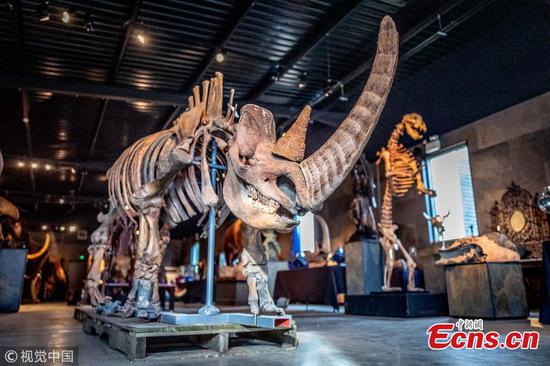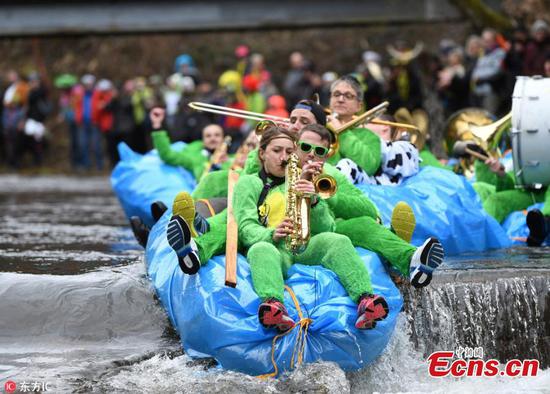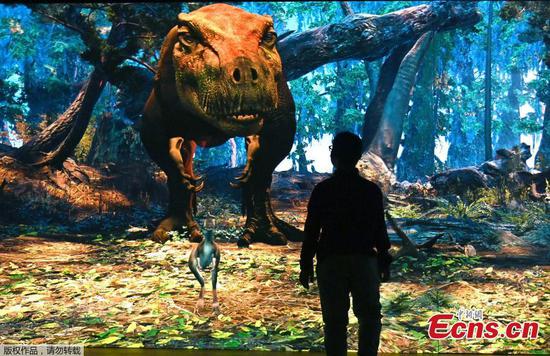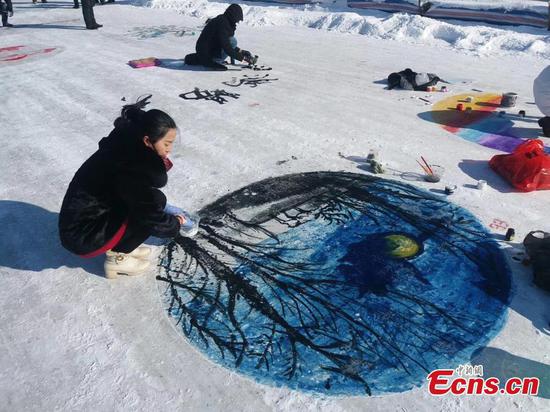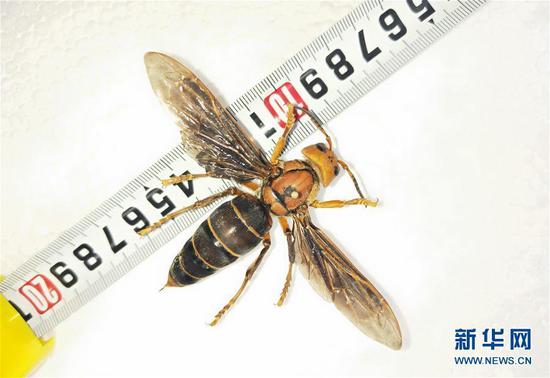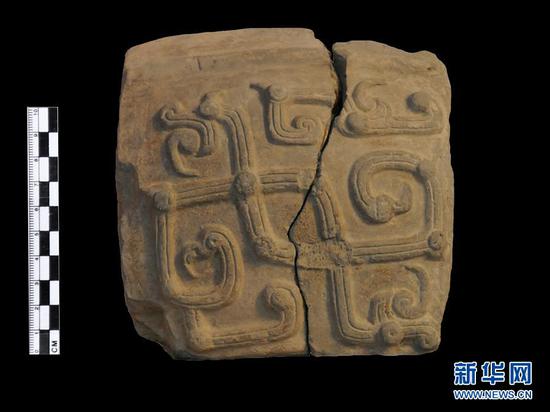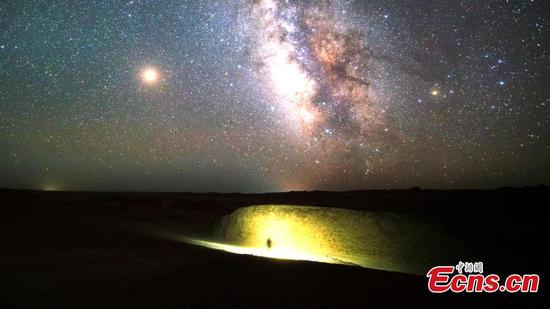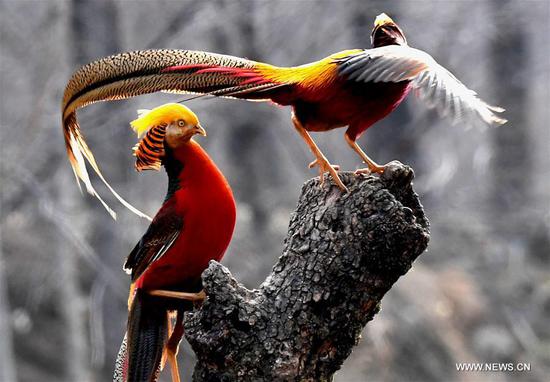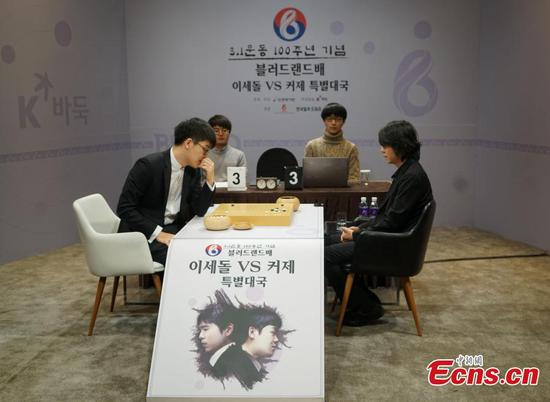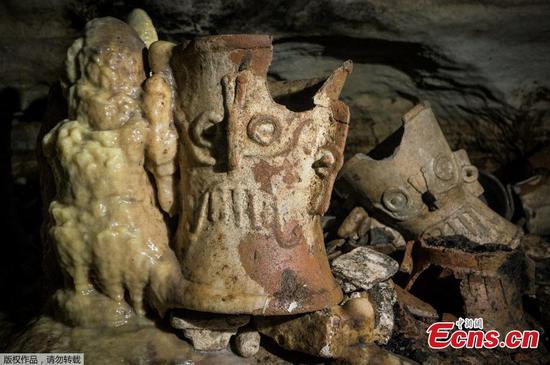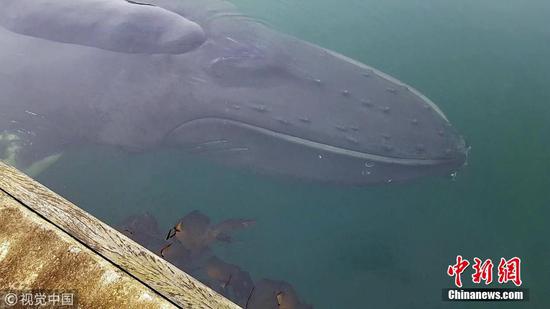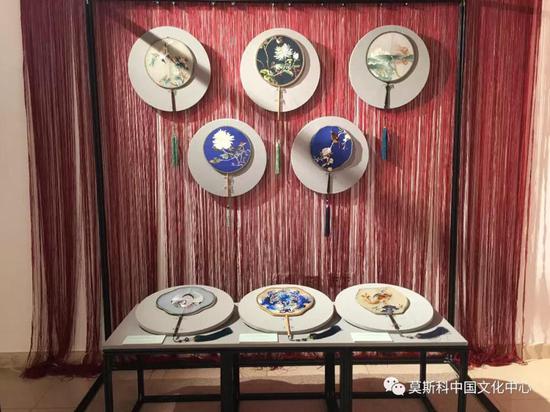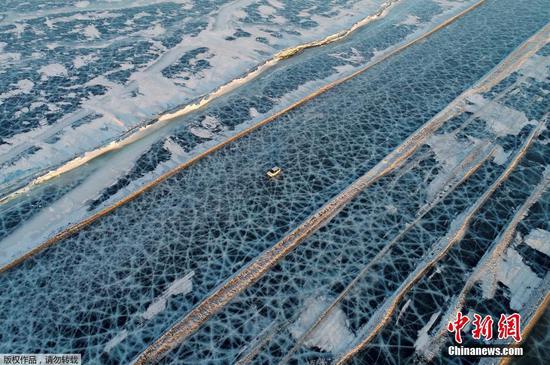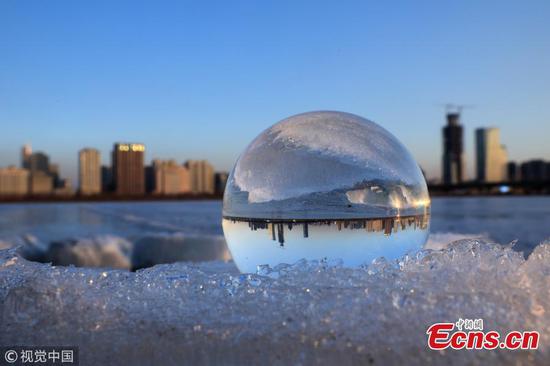China's lunar rover has conducted scientific detection on some stones on the far side of the moon, which might help scientists find out whether they are from outer space or native to the moon.
The rover Yutu-2, or Jade Rabbit-2, was sent to the Von Karman Crater in the South Pole-Aitken (SPA) Basin on the far side of the moon on Jan. 3 in the Chang'e-4 mission.
Currently, the rover has traveled about 127 meters on the moon, and is taking a "noon break" as the temperature on the moon rises extremely high. It's scheduled to resume work on March 10 and switch to its dormant mode on March 13, according to the Lunar Exploration and Space Program Center of the China National Space Administration.
Scientists said the rover has conducted scientific detection on its tracks and nearby stones. The largest stone detected has a diameter of about 20 cm, and the rover came as close as 1.2 meters to it.
Experts from the National Space Science Center (NSSC) under the Chinese Academy of Sciences (CAS) said they want to figure out the origin of the stones, whether they are aboriginal on the moon, or meteorites from outer space. If they are aboriginal, what is the physical process of their formation?
As a result of the tidal locking effect, the moon's revolution cycle is the same as its rotation cycle, and it always faces the earth with the same side.
The far side of the moon was regarded as a virgin territory with unique features, and scientists expect important discoveries.
Ping Jinsong, a researcher with the National Astronomical Observatories under CAS, said that the rocks on the lunar surface might be sputtered body as a result of the meteorite impact.
Scientists have found evidence indicating a heavy asteroid bombardment event in the solar system around 3.9 billion years ago. And the SPA Basin might be an impact from that period. The exploration might offer clues as to why the bombardment occurred, said Zou Yongliao, director of the lunar and deep space exploration division of CAS.
The other possibility is that the stones are aboriginal, and contain geological information different from the lunar dust, said Ping.
"The rocks on the far side are more ancient. The analysis of their substance composition might help us better understand the evolution of the moon," said Zou.
In addition, the study on the tracks of the rover may reveal the information about the evolutionary history of the lunar surface over billions of years, Ping said.
The 135-kg lunar rover Jade Rabbit-2 is the first ever rover to drive on the moon's far side, as well as the lightest rover ever sent to the moon.
From the images sent back from Chang'e-4, scientists found the area surrounding the probe is dotted with craters of different sizes, and it's very difficult for the rover to drive in the region.
The rover is capable of avoiding some obstacles. If there are obstacles in front of it, it can stop and plan a new route on its own. It can also climb some slopes and cross rocky terrain, according to its designers from the China Academy of Space Technology.
The rover has sent back pictures about the stones on the far side of the moon.
Experts from NSSC said it's not easy for the rover to take the pictures since it cannot move as freely as a human. It takes a long time to move and adjust the position and angle of the rover.
Scientists hope Jade Rabbit-2 will travel farther to send more images of the unknown terrain, "listen" to the stories recorded in the ancient lunar rocks, and find more traces of the early history of the moon and the solar system.
Scientists said it's just the beginning of the scientific journey of the Jade Rabbit-2, and they expect more interesting discoveries.













